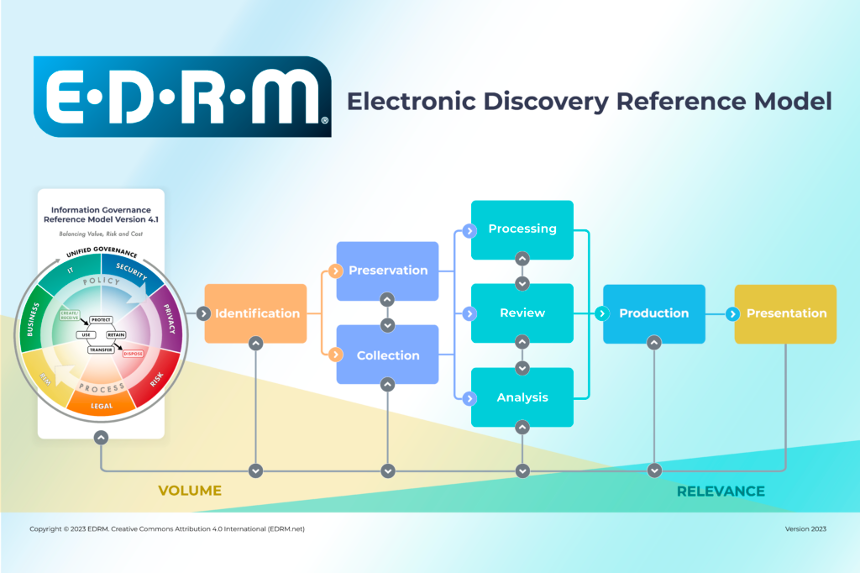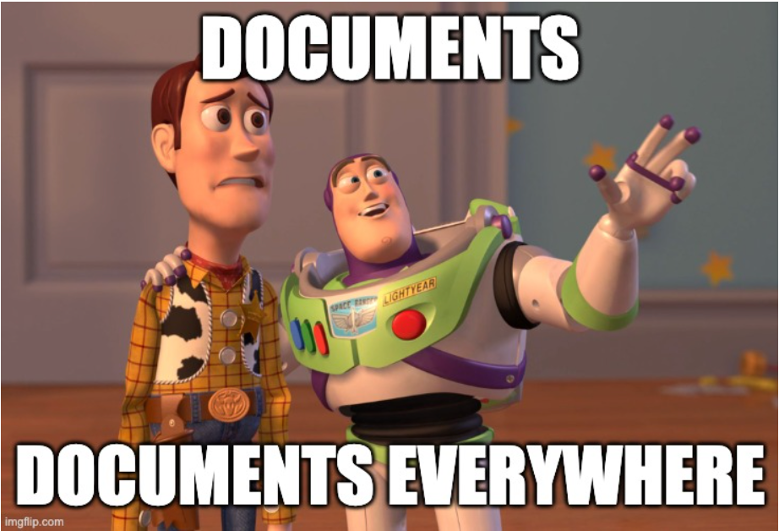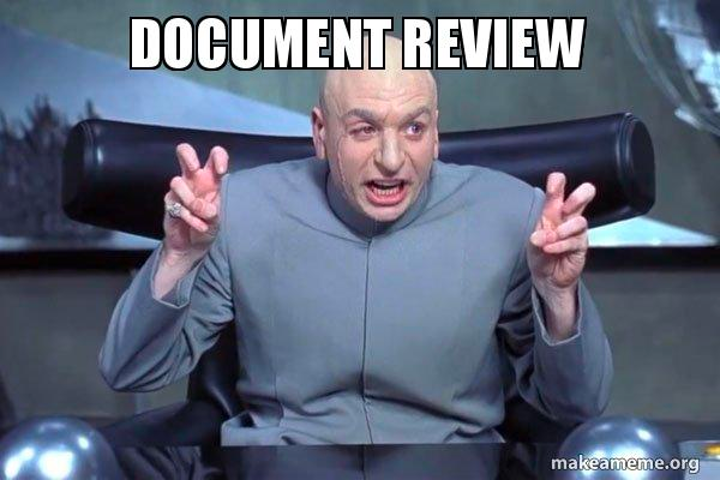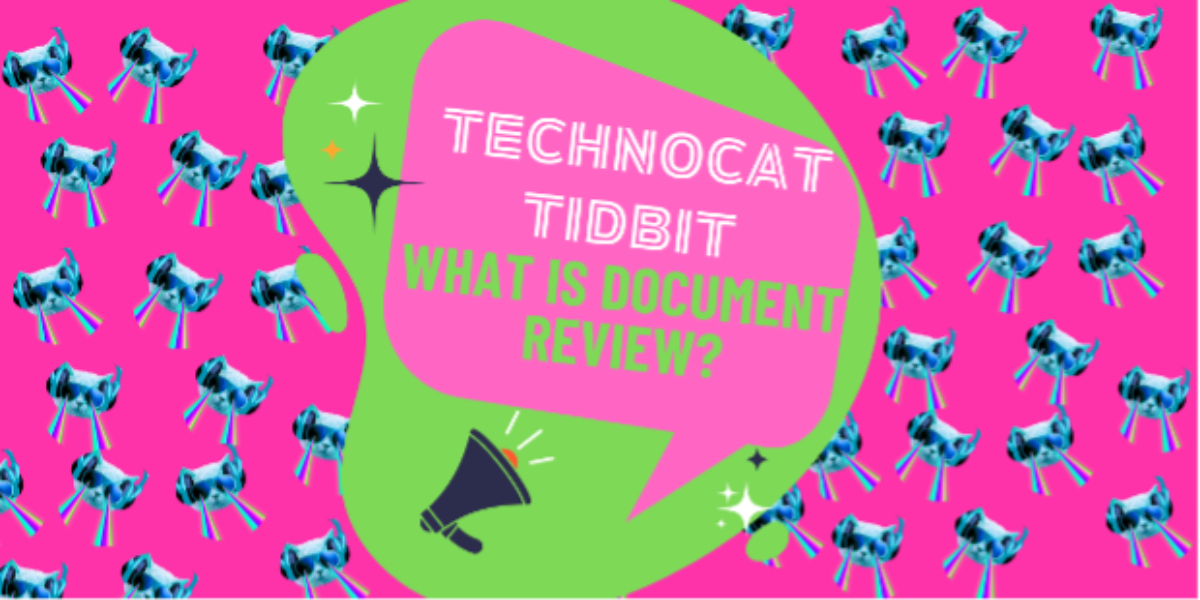What is Document Review for eDiscovery?
Let’s dive into the captivating realm of Electronic Discovery (eDiscovery) document review! (No, I am not being sarcastic!) This critical stage involves examining gathered documents to uncover evidence that is relevant, responsive, and privileged. Often in response to a discovery request.
Document review is the crucial step before production. Applicable to litigation, regulatory investigations, due diligence, subpoenas, and internal inquiries. After all the culling down of data volumes, application of search terms and various workflows to reduce datasets, document review is the human step that separates signal from noise.

WTF is Doc Review?
So, what is eDiscovery document review? It is a crucial stage of the eDiscovery process where legal professionals examine the gathered electronic documents to determine if they are privileged, responsive, or relevant to a legal matter.
The tireless quest for relevant data is a challenge in-house legal departments, outside counsel and opposing counsel all face…
The scope of discoverable information is governed by our trusty guide, Federal Rule of Civil Procedure (FRCP) 26(b)(1). This ensures that parties in a legal matter have access to non-privileged information relevant to their claims or defenses and proportional to the case’s needs.
During document review, our mission is clear: to determine what information meets the criteria of relevance, proportionality, and non-privilege as outlined in Rule 26(b)(1). It’s all about separating the wheat from the chaff and uncovering the gems that will shape our legal battle.
__________________________________________________________________________________
Document Review is the crucial stage of the eDiscovery process where legal professionals examine the gathered electronic documents to determine if they are privileged, responsive, or relevant to a legal matter.
__________________________________________________________________________________
Document Review is the crucial stage of the eDiscovery process where legal professionals examine the gathered electronic documents to determine if they are privileged, responsive, or relevant to a legal matter.
Where Does Document Review Fit in the eDiscovery Process?
So, what exactly is document review?
Imagine you’re in the midst of litigation, internal investigations, or regulatory inquiries. Document review steps onto the scene as the sixth stage of eDiscovery, following data collection and processing. It’s the pivotal phase where a diligent review team meticulously examines documents. Determining their relevance, discoverability, and privilege status.
Document review is just the tip of the eDiscovery iceberg. Before diving into the thorough analysis of Electronically Stored Information (ESI) and sharing it with the opposing party during production, legal teams embark on the exhilarating journey of document review. It’s all about evaluating the relevance, significance, and privilege status of each document to uncover what truly matters.
Known by its simple moniker, “review,” this stage of the Electronic Discovery Reference Model (EDRM) is where organizations scrutinize the documents tied to a litigation matter.
The task at hand? Determining their relevance, responsiveness, and privilege status. But be warned, my legal comrades, for this formidable undertaking is often the labor-intensive and cost-intensive pinnacle of the eDiscovery process. Luckily, optimization like technology-assisted review and powerful document review platforms like Reveal-Brainspace help tackle this costly and time-consuming step of the eDiscovery process.

When Does Document Review Happen?
Litigation is not the sole driver behind the document review process. Oh no, it goes beyond that. Brace yourselves for a world of possibilities where document review proves its worth in various scenarios, including:
- During an internal investigation, when you dive deep into the company’s own mysteries.
- In the midst of a regulatory investigation, you must navigate the complex web of compliance.
- A due diligence review for a merger or acquisition, where every document holds the key to sealing the deal.
- Ah, the infamous subpoena! When the outside world comes knocking, document review becomes your trusty shield.
- And let’s not forget those intriguing outside inquiries that demand your utmost attention.
Document review is a versatile beast. And a weapon for mining insights from electronically stored information (ESI). With the right document review software, even the overwhelming document review is manageable.

So, What Happens in eDiscovery Document Review??
To ensure cost efficiency, legal teams often call upon squads of contract attorneys or paralegals. These legions meticulously examine each document, one by one, unraveling the secrets they hold. As technology advances, these processes are gradually becoming less laborious.
Our trusty paralegals and document reviewers don their metaphorical detective hats. Designating documents as privileged, relevant, or responsive—these designations are known as “tags.”
But wait, there’s more!
Depending on the review protocol, additional tags come into play. Case-specific tags shed light on critical issues. While sensitivity tags ignite excitement over the “hot” or “smoking gun” documents. All in the quest to unearth potentially relevant documents. Each applying redaction whenever privileged information comes into the mix.
And who can forget the helpfulness tags, revealing whether a document leans positive, neutral, or negative? Each tag represents a valuable attorney work product and should be retained whenever possible. Especially for documents that may be involved in multiple litigation matters.
So, my legal tech aficionados embrace the power of document review. Leverage the expertise of our contract warriors and the ever-evolving technology at our disposal. Remember, this stage holds the key to significant cost savings, making it a vital part of the eDiscovery journey. Let’s tag, classify, and preserve our way to victory!
To be continued…
Stay tuned as we dig into the Document Review process, Document review project nightmares, and legal strategies for Document Review in future tidbits.
Interested in ACEDS’s educational content? Subscribe to the ACEDS Blog for weekly blog updates: https://aceds.org/aceds-blog/



